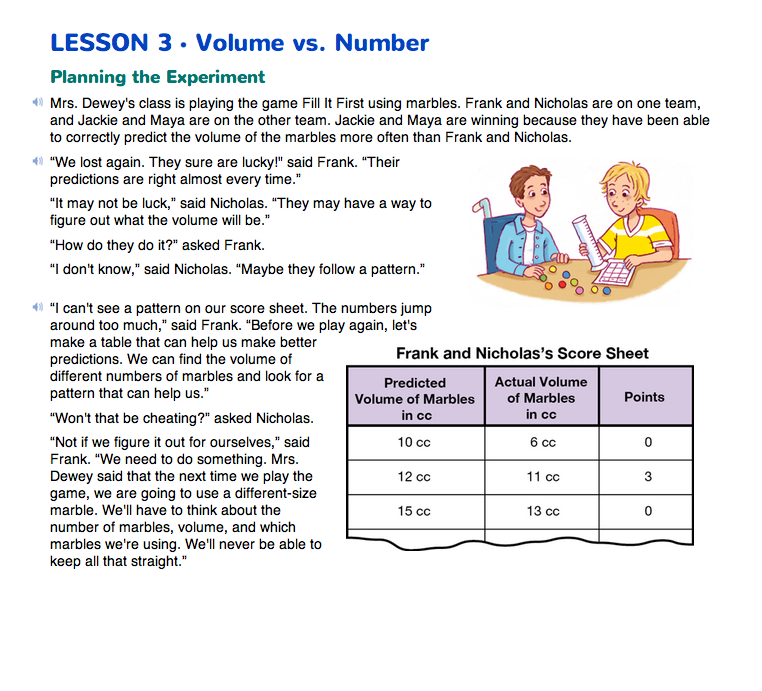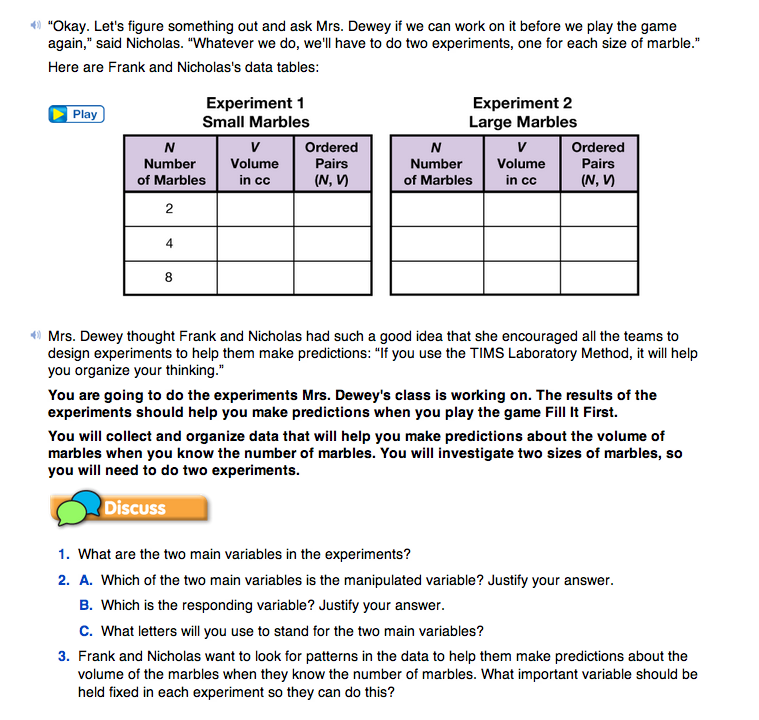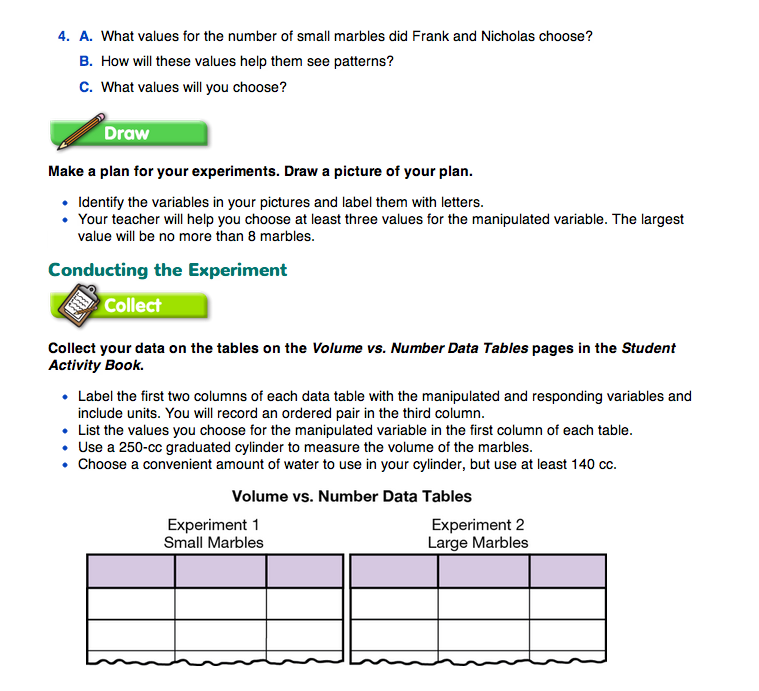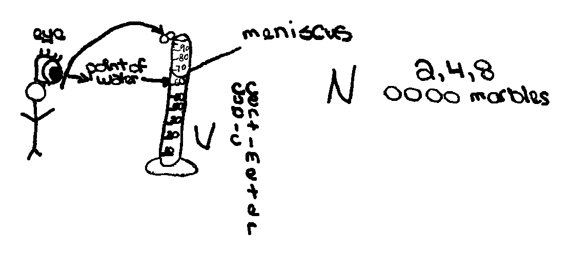Volume vs. Number
Est. Class Sessions: 3–4Developing the Lesson
Part 1. Plan the Experiment
Design an Investigation. Ask partners to read the Planning the Experiment section of the Volume vs. Number pages in the Student Guide. Allow a few minutes for students to discuss their results from when they played the game in Lesson 2. Students make conjectures about their own scores as well as those of the two teams in Mrs. Dewey's class.
Ask:
Identify the Variables. The questions in the Discuss section will help students identify the variables in the two experiments. The two main variables in the experiments are the number of marbles and the volume of the marbles in the graduated cylinder (Question 1). At the beginning of the experiments, students will choose the number of marbles they will add to the cylinder, so Number of Marbles is the manipulated variable (Question 2A). The Volume of the marbles is the responding variable since students will find the volume during the experiments (Question 2B). To be able to find a relationship between the number and volume of the marbles, the size of marble must be held fixed (Question 3).
Students will conduct two experiments: one using small (standard-size) marbles and one using larger spheres. Within each experiment, the number and total volume of the marbles in the graduated cylinders will vary, but the size of the marbles will stay the same.
Question 4 asks students to choose values for the number of marbles that will help them see patterns in their data. In the vignette in the Student Guide, the two students decide to find the volume of two, four, and eight marbles. Choosing values for the manipulated variable that double or that are multiples of one another will help students see corresponding patterns in the values of the responding variable. Do not choose values greater than eight marbles so the water in the cylinder will cover all the marbles.
Draw a Picture. The first step in the lab is to draw a picture of the experiment. Figure 1 shows such a picture. Note that the artist showed the technique for measuring volume by displacement and that the variables are clearly labeled.
Question 4 asked students to choose values for the experiment's manipulated variable, number of marbles. Make sure their choices are reasonable. At least three values should be listed and the largest value should be no more than 8 marbles. Be sure students add these values to their drawing.















